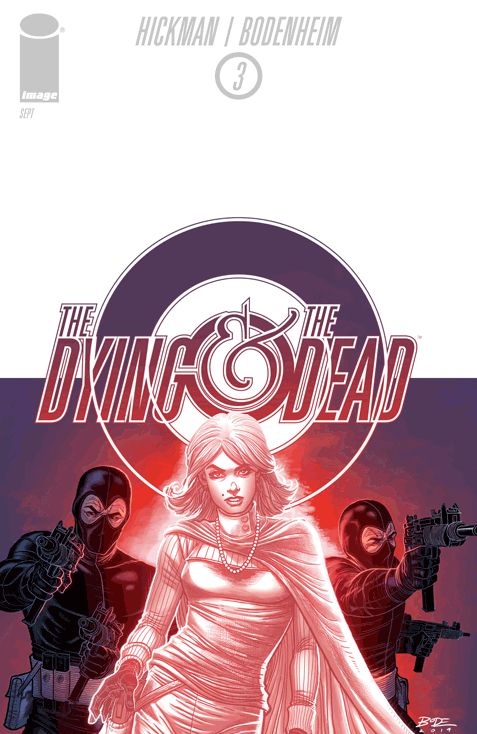Readers might well be forgiven for forgetting about Jonathan Hickman and Ryan Bodenheim's "The Dying and the Dead" since it's been five months since the second issue was released. In a short afterword, Hickman offers an apology and promises a more reliable publication schedule next year, but the damage to the momentum has been done. If the reader is willing to forgive this, though, the new issue is a gripping read from the first page to the last.
Remember the opening sequence of the very first issue? The one where a woman killed her own twin sister as part of a mission to recover an object called the Bah al'Sharur? Instead of prolonging the mystery or writing an information dump, Hickman devotes an entire issue to creating a lavish origin story for this artifact-as-plot-device.
Hickman's writing is recognizable for its flowing rhythms, but his preoccupations are even more distinctive. His stories always have an epic, global or cosmic scale. His themes are invariably Power, Conspiracy and Myth. Both the past and the future feel equally liquid and alive in Hickman's hands. He skips across centuries nimbly and his sense of adventure and imagination doesn't have temporal boundaries. He and Bodenheim work well together. Bodenheim's panel and page compositions build an atmosphere of heightened drama, and he copes well with Hickman's demands of scale.
The opening scene doesn't make a big splash, but the second scene is designed to grab the reader's attention with a huge Nazi swastika on Wewelsburg, a Renaissance castle that Heinrich Himmler meant to make into the "Center of the New World." If that wasn't riveting enough, the second panel has a close-up of Adolf Hitler prying a morsel of meat apart with his teeth. An unlikely dinner table conversation between the infamous dictators of three Axis Powers in WWII ensues.
None of "The Dying and the Dead" #3 occurs in the present day, so the Colonel and his boys are absent. The god-like Baduri remain flat and derivative divinities. Even their ghostly appearance is reminiscent of the Endless from Neil Gaiman's "Sandman." Thus, the Axis Powers dictators dominate the story.
There's an aura of unreality for the scene set in 1944. One ridiculous, unbelievable event is followed by another and another, but the plot as a whole doesn't shatter. First, the three Axis leaders never had a joint meeting in real life. Hitler, Mussolini and Hirohito certainly did not call themselves "monsters." They are rightly regarded as tyrants responsible for atrocities, but they saw themselves as great men: standard-bearers, saviors, builders of great empires. Also, popular consensus among historians is that Hirohito had a weaker personality and less personal courage than his allies in the West, but -- in Hickman's version -- he is more brutal and unbending than the others. Finally, the gore in the climax is so over-the-top that it's campy and impossible to take seriously. "The Dying and The Dead" is a Fantasy-Western hybrid, though, so Hickman's historical liberties allow him to play with readers' expectations without triggering a withdrawal of their suspension of disbelief. As bizarre as his portrayals are, his world-building and tight pacing make all the pieces fit together.
Time and place are never in question because of well-placed textboxes and Michael Garland's palette. Garland uses cool-toned light yellow and green for all the scenes with the Baduri and purplish-gray and rust-red for the WWII-era scenes. I usually hate monotone overlays of color; generally, this approach feels lazy, doesn't apply much color theory technique, ignores the direction of light and flattens space and detail. In "The Dying and The Dead" #3, it is excusable because Garland executes an intentional tradeoff. Hickman's flow of words merges the action into a whole and Bodenheim doesn't change his style for the different times, so it's up to the colorist to keep the transition points super-clear. Bodenheim's linework has very heavy outlines, too, so it manages to stand up to the monotones even if some depth is lost.
"The Dying and the Dead" #3 is part horror story, part Greek tragedy and part "Lord of the Rings," with the Bah al'Sharur playing the part of the One Ring. The plotting has a great combination of old tropes and new twists, wild daring and earnest outlook. That's good enough reason to have patience until the publication schedule is more regular in 2016.

